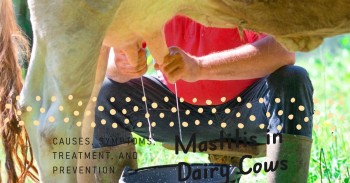Guardians of the Pasture: Tick-Borne Diseases in Cattle
Cattle farming plays a vital role in sustaining agriculture,
providing us with essential dairy and meat products. However, this flourishing
industry faces numerous challenges, with tick-borne diseases being one of the
most concerning. Tick-borne illnesses like Anaplasmosis, Babesiosis, Lyme
disease, and Ehrlichiosis can wreak havoc on cattle herds if left unchecked. In
this extensive blog post, we will delve into the world of tick-borne diseases
in cattle, shedding light on the significant illnesses, their signs and
symptoms, epidemiology, transmission, prevention, and explore innovative
solutions to protect these magnificent creatures.
Anaplasmosis - The Silent
Intruder
Babesiosis (Texas
Cattle Fever) - A Warm Climate Menace
Lyme Disease
(Borreliosis) - A Threat Beyond Humans
Ehrlichiosis - Sneaky and
Systemic
Tick Control and Treatment
Strategies
Recognizing Signs and
Symptoms
Epidemiology of
Tick-Borne Diseases in Cattle
Transmission of Tick-Borne
Diseases
Proactive Measures for
Prevention
Discover effective treatments and proactive measures to
safeguard your cattle from the dangers of tick infestations.
Anaplasmosis - The Silent Intruder
Anaplasmosis is a formidable foe, often striking without
warning and leaving a trail of devastating consequences. Caused by the
bacterium Anaplasma marginale, this tick-borne disease infiltrates red blood
cells, leading to severe anemia in cattle. In the early stages, the disease is
often challenging to detect, earning its reputation as the "silent
intruder" within the herd. Common symptoms include lethargy, weight loss,
fever, and pale mucous membranes. In severe cases, Anaplasmosis can lead to
jaundice, abortion in pregnant cows, and even death.
The primary mode of transmission of Anaplasmosis is through
the bite of infected Rhipicephalus (Boophilus) microplus, commonly known as the
cattle tick. These bloodthirsty parasites feed on cattle, transmitting the
pathogen from one animal to another. It is essential for farmers to recognize
the signs of Anaplasmosis promptly and implement effective prevention
strategies. Regular tick control measures, pasture rotation, and maintaining
cattle in tick-free zones can significantly reduce the risk of infection.
Isolating and treating infected animals is equally crucial in containing the
spread of the disease within the herd.
Babesiosis (Texas Cattle Fever) - A
Warm Climate Menace
Babesiosis, often referred to as Texas Cattle Fever or
Redwater, presents a unique challenge for cattle farmers in warm and tropical
regions. This tick-borne disease is caused by the protozoan parasite Babesia
bigemina, which invades and destroys red blood cells, resulting in anemia and
severe health issues. Infected cattle may show symptoms such as fever,
weakness, decreased appetite, and reduced milk production. In severe cases,
Babesiosis can be fatal.
The primary vector for Babesiosis is the tropical bont tick
(Amblyomma variegatum), a formidable foe that thrives in warm and humid
climates. These ticks are efficient vectors, transmitting the parasite to
cattle during their blood meals. To protect cattle from Babesiosis, farmers
must adopt rigorous tick control measures and pasture management practices.
Early detection of the disease is crucial for successful treatment, which may
involve the use of anti-parasitic drugs. Vaccination against Babesiosis is also
available in some regions and can be a valuable preventive tool.
Lyme Disease (Borreliosis) - A
Threat Beyond Humans
Lyme disease, commonly associated with humans, also poses a
threat to cattle. The causative agent, Borrelia burgdorferi, is transmitted to
cattle through the bite of infected Ixodes ricinus (castor bean) ticks. While
cattle may not display the characteristic "bull's-eye" rash seen in
humans, they can experience lameness, fever, joint inflammation, and a decrease
in milk production.
Preventing Lyme disease in cattle requires a multifaceted
approach. Tick control is a crucial aspect, as Ixodes ricinus ticks are
prevalent in grassy and wooded areas where cattle graze. Implementing pasture
rotation, keeping grass short, and clearing wooded areas can help reduce tick
exposure. Regular monitoring of cattle health and early detection of Lyme
disease symptoms are vital for timely treatment with antibiotics.
Ehrlichiosis - Sneaky and Systemic
Ehrlichiosis is caused by various Ehrlichia species and can
be a sneaky and systemic disease in cattle. These intracellular bacteria target
white blood cells, affecting the immune system and leading to a range of
clinical signs. Unfortunately, diagnosing Ehrlichiosis can be challenging, as
its symptoms may overlap with other illnesses.
The most common tick vector for Ehrlichiosis is the
Rhipicephalus (Boophilus) microplus, also known as the southern cattle tick.
These ticks are highly efficient transmitters of the Ehrlichia bacteria.
Implementing tick control measures, such as acaricides, is crucial for
preventing Ehrlichiosis in cattle. Regular veterinary check-ups and blood tests
can help detect the disease in its early stages, enabling timely treatment with
antibiotics.
Tick Control and Treatment Strategies
When it comes to tick-borne diseases, prevention is the
foundation of success. Effective tick control measures are essential to reduce
tick populations and minimize disease transmission. Farmers can utilize
chemical acaricides, biological controls, and integrated pest management
techniques to manage ticks effectively.
In the case of tick-borne disease outbreaks, early detection
and prompt treatment are paramount. Veterinarians may prescribe antibiotics
based on the specific pathogen and the severity of the disease. Supportive
care, including fluid therapy and nutritional support, is often necessary to
aid the animal's recovery.
Recognizing Signs and Symptoms
Being able to recognize the signs and symptoms of tick-borne
diseases in cattle is crucial for farmers. Early detection allows for immediate
intervention, potentially saving the lives of affected animals and preventing
disease spread within the herd. Common clinical signs to watch for include
fever, lethargy, reduced appetite, weight loss, lameness, and anemia.
Regular monitoring and observation of cattle health are
essential to identify any unusual symptoms. Farmers should maintain accurate
records of animal health and seek veterinary assistance at the first sign of
trouble. By partnering with veterinarians, farmers can develop effective
disease management plans tailored to their specific herd's needs.
Epidemiology of Tick-Borne
Diseases in Cattle
The epidemiology of tick-borne diseases in cattle is
influenced by various factors, making it a complex subject of study. Climate,
geographic location, tick species prevalence, and cattle husbandry practices
all play significant roles in disease transmission. Researchers and veterinary
professionals analyze these factors to gain a comprehensive understanding of
disease patterns and devise targeted prevention and control strategies.
Cattle farmers must stay informed about the specific
tick-borne diseases prevalent in their region and be aware of any emerging
threats. Regular surveillance of tick populations and disease prevalence can
provide valuable insights for preventive planning. Collaboration between
farmers, veterinarians, and researchers is vital to combat tick-borne diseases
effectively.
Transmission of Tick-Borne Diseases
Understanding the intricate process of tick-borne disease
transmission is essential to devising effective prevention strategies. Ticks
serve as vectors, carrying pathogens from one host to another during their
blood meals.
The lifecycle of tick
species, their feeding habits, and their preferred hosts all influence the
transmission dynamics.
Ticks exhibit specific host-seeking behaviors, such as
questing, where they climb vegetation to attach to passing hosts. Farmers can
adopt measures to reduce tick exposure for cattle, such as maintaining clean
and tick-free resting areas, utilizing tick repellents, and implementing
controlled grazing practices. Integrated tick control approaches, including
strategic acaricide application, can significantly limit the transmission of
tick-borne diseases.
Proactive Measures for Prevention
Proactive prevention is the cornerstone of preserving cattle
health and protecting the livelihoods of farmers. Implementing a combination of
preventive measures significantly reduces the risk of tick-borne diseases in
cattle.
Regular tick surveillance and monitoring can help farmers
identify tick hotspots and implement targeted control measures. The strategic
use of acaricides and biological control agents can help maintain tick
populations at manageable levels. Farmers should also consider the use of
tick-resistant cattle breeds when possible.
Furthermore, good pasture management practices, such as
rotational grazing and maintaining clean resting areas, reduce cattle exposure
to ticks. Quarantine protocols for introducing new animals to the herd can
prevent the introduction of infectious agents. Proper biosecurity measures,
including the use of footbaths and limiting visitors, can also minimize disease
spread.
Cattle farmers must equip themselves with comprehensive
knowledge and innovative strategies to combat the threat of tick-borne
diseases. By understanding the signs and symptoms, epidemiology, transmission
dynamics, and implementing proactive prevention and treatment measures, farmers
can create a resilient and thriving herd. The symbiotic relationship between
farmers and their cattle is nurtured through dedicated care and vigilance,
ensuring a harmonious coexistence with these magnificent creatures.
As guardians of the pasture, it is our responsibility to safeguard
the health and well-being of our bovine companions, embracing a future where
tick-borne diseases become mere shadows of the past. By harnessing the power of
knowledge, technology, and collaboration, we can continue to flourish in the
ever-evolving landscape of cattle farming. Together, let us stand united in
this noble endeavor, preserving the legacy of cattle farming for generations to
come.


















